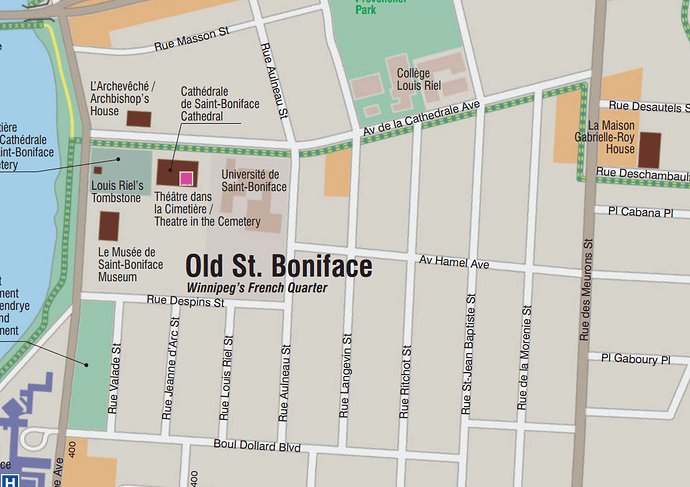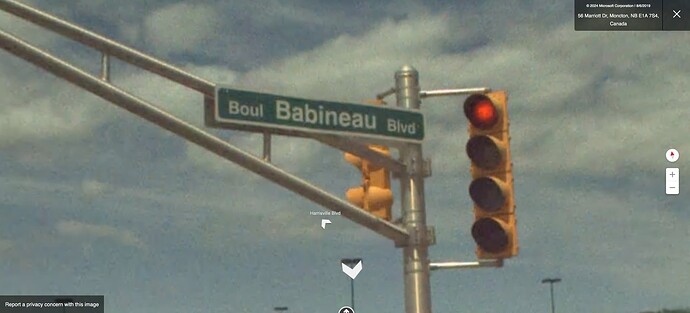Okay, but the way the dataset is parsed and rendered by many if not most users of the dataset is name=* is the tag that gets used before any other variant, including the myriad name:<lang>=* tags that may be added to a given object. In this case, in St. Boniface, using the English exclusively in the name=* part of the dataset is incorrect, because the English name is not the one that should be the default. That’s why:
I totally agree that
or at the very least it’s not ideal, but
Are there? Because you really don’t seem to like any of them! You just want to change the name=* tag from the Frenglish compromise that, yes, just unabashedly apes the signage, to the unilingual English. Your premise right from the get-go has been:
That’s not a “proven method for localization”, that’s just making it default to English, and—again—that’s not an acceptable solution because you’re operating from the false premise that that would accurately represent “official usage” and “on-the-street local custom”. I don’t know how you can make an appeal to “official usage” and then turn around, just ignore my reference to the City of Winnipeg Charter, and write:
![]()
Your chief complaint about the “follow-the-street-signage” compromise seems to be:
I don’t use multi-lingual routing, but if the software you’ve used is “doing it wrong” that’s the fault and problem of that software not parsing the dataset properly. Don’t fudge the dataset to make it look (or sound) the way you want.
I fully agree that it’s better for a user of the dataset to pick one of name:fr=Avenue Niverville or name:en=Niverville Avenue to suit the language preferences of the user, but in the absence of that software being able to parse using one or the other, it’ll default to name=*, and using only the English or French name in name=* is wrong for the aforementioned reasons. You harp on how name=Avenue Niverville Avenue is gibberish that doesn’t really work because that’s not it’s actual ‘name’, like so…
Then you question how “name=Avenue Niverville; Niverville Avenue” would show up when rendered, or ought to show up when rendered:
I dunno man, let’s go back and look at that map from Tourism Winnipeg I linked earlier and see what acceptable visual rendering by others is. Here, I’ll take a snapshot for everyone’s benefit:
![]()
![]()
![]()
At the end of the day you may think it’s a stupid, ugly compromise, but even these sorts of English-language maps go out of their way to present both the English and French names in the exact same fashion as the street signs.




